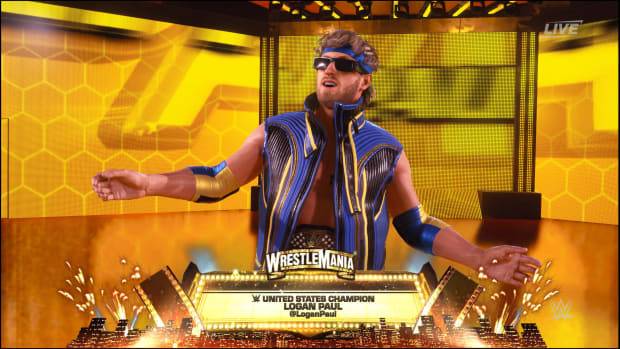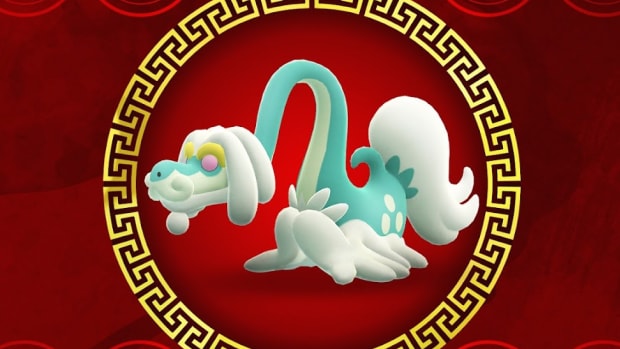Total War: Pharaoh review – a grand campaign destined for a greater stage
Being Pharaoh, it turns out, is not exactly a relaxing job. If you take the position seriously, that is. Ever since I took the throne playing as Tausret, I’ve had to run from one end of my empire to the other, putting out fires and dealing with crisis after crisis. It’s not even my fault. Sure, desert nomads and Sea Peoples do invade Egypt periodically from the west and north, but me and my dozen vassals have established strong garrisons at those borders and coasts – our Pillars of Civilization stand strong and bright, symbols of hope in a time of demise.
Things are different in Canaan and the Hittite Empire, which have lost several great cities to the relentless onslaught of the Sea Peoples, bringing down the civilization level in general. Despite my best efforts to rule well, the world is quite literally turning into a darker place, the map being ever more devoid of color. Civilization as a whole is in peril, weakening the economy on a global scale, not just for Hittites and Canaanites. Playing whack-a-mole with the consequences of this development works for a while, but I can’t just focus inwards: Tausret must lead an expedition outside of her realm in an attempt to rebuild some of the sacked Pillars of Civilization and turn the tide – even if it may cost her the crown. Otherwise the strain on my own economy might become too great and Egypt, too, could fall.
Such can be the dilemmas in a campaign of Total War: Pharaoh, the newest strategy game by Creative Assembly Sofia. While you and your rivals compete for glory and power, a truly terrible crisis for the entire world is looming, forcing you to react if you don’t want to see everything you have fought for collapse into nothing. The Bronze Age Collapse is to Total War: Pharaoh what the invasion of the Huns was to Total War: Attila – an engaging endgame crisis that will impact your campaign greatly. Will you stand alone as everyone falls to the Sea Peoples and natural disasters, preferring to enjoy your power as long as it lasts, or will you risk it all to reach out your hands and help preserve civilization?
This mechanical representation of the Bronze Age Collapse is truly fantastic and only one great aspect of the Total War: Pharaoh campaign, which has more depth and mechanical complexity than any entry into the series before it.

If civilization is close to collapse, the lights will literally go out and leave the map colorless.
Creative Assembly
There is a politics system that simulates the scheming at court, providing you with some great bonuses no matter your current goals or play style. By currying favor with powerful members of the court, you can gain access to elite units, obtain additional resources, or even assassinate other characters, freeing up their position and taking it for yourself – which, of course, marks you as a target for plots as well. These plots are resolved after every sixth turn, when one year of time has gone by. Pharaoh’s campaign is structured this way to mirror the ancient Egyptian year, which always began with Shemsu Hor – the Pharaoh’s journey up the Nile. Aside from resolving plots, Shemsu Hor is when every leader’s special commandment gains a bonus effect.
For Tausret, this bonus effect provides her with additional charges for her instant-building ability, which is fantastic for obvious reasons. The regular effect of her commandment immediately grants Tausret the resources produced in the province she’s currently in, another strong boost for the economy. Like the economy of CA Sofia’s previous game, the Total War Saga title Troy, Pharaoh’s is resource-based: Food, Bronze, Stone, Wood, and Gold are required to construct buildings, recruit and maintain troops, and conduct trade. Bartering with the AI for resources you need is essential, especially early on when your realm won’t have its own sources for everything.
Diplomacy, in general, doesn’t feel as good as in Total War: Three Kingdoms, but is a good deal more useful than in the Warhammer trilogy. Vassals actually pull their weight during war and are especially useful when it comes to deflecting the invasions of nomads and Sea Peoples – in my Tausret campaign, I avoided occupying any border and coastal settlements for the most part, leaving the defense of these vulnerable areas to my vassals. Vassals also give you gifts from time to time, such as units for your instant-recruitment pool or resources.

In this game, I was able to unite most of Egypt under Tausret as vassals and allies.
Creative Assembly
Tausret is a great character to start with in a standard campaign: She has access to many rich regions near her, is allied to her husband Seti right from the start, and her abilities and special buildings allow her to quickly build a strong economic backbone for her expansion plans. To add to this economic power, I chose to follow the Ancient Legacy of Hatshepsut, enabling me to send a merchant caravan out into the world, buying and selling rare resources to further enrich myself and gain special equipment for my characters.
Ancient Legacies are another mechanic that can greatly impact your play style, supporting or changing it depending on your faction and goals. Hatshepsut’s is fairly flexible, as it can support peaceful and aggressive approaches, but something like Thutmose III.’s Ancient Legacy clearly lends itself to an offensive style of play. Locking in an Ancient Legacy is one of the fundamental decisions of every campaign and greatly adds to the game’s replayability value – something that CA Sofia has paid much attention to. From random start positions over disabling the Sea Peoples’ invasions to tuning army maintenance costs, Total War: Pharaoh offers the deepest campaign customization of any Total War title to date. It’s great fun to get a start with someone like Ramesses in the middle of Anatolia, so removed from his usual position. Should he try to claim the Great King’s crown, or will he make the long way down to Egypt to fulfill his historical destiny?
People have been concerned about the scale of Total War: Pharaoh, having expected that the Aegean coast and Mesopotamia would be playable as well in a Bronze Age game – and that would have been fantastic. Pharaoh’s campaign mechanics are so good, they deserve an even grander stage to shine on. However, if there were fears about the game becoming repetitive due to the more focused map, then those were unfounded: Both the customization options and the campaign mechanics themselves lead to vastly different experiences across the board.
Sure, it won’t be as varied as in the Warhammer trilogy – you won’t find monsters and magic in Pharaoh. This game lives and breathes history, sometimes with remarkable attention to detail. Almost disastrous battles you win aren’t called Pyrrhic Victory in Pharaoh, because Pyrrhus has not lived yet. Instead, such a win is called Cadmean Victory after the mythical founder of Thebes.
As such, your armies consist of men wielding spears, swords, slings, bows, and various other weapons with the main difference being how well they are armored and disciplined. Cavalry is not present in Pharaoh, staying true to history. Instead, chariots are the expensive and mobile crown jewels of armies. Light chariots crewed by archers wheel around and harass troops, while heavier chariots crewed by spearmen can charge home, bulldozing enemy formations under the right circumstances. Battles are clearly the weaker part of Pharaoh, though mainly because the campaign is so good. There are new and interesting aspects here as well, like stances that allow your units to slowly back away or push forward as they fight (Cannae’ing your enemy has never felt so good) and the fact that armor degrades over the course of a battle, making it viable for light troops to go toe-to-toe with heavy troops under the right circumstances.

Chariots won't exactly send troops flying. Accurate, but a little sad from a game perspective.
Creative Assembly
In general, Pharaoh’s battles feel like a more refined version of Troy’s – if you hated that title’s encounters, you probably won’t love Pharaoh’s either, but you might get used to them. In the absence of cavalry, chariots fulfill the role of mobile hit-and-run units, though you best be careful with them – while charges can be devastating, infantry can ensnare, surround, and utterly destroy chariot groups. This is historically accurate, but could turn some players off. There is also the fact that terrain like forest and mud can slow down or damage your chariots, making your tactical decision-making key.
Speaking of terrain and the environment, things like torrents and sandstorms can have a huge impact on battles as well, such as greatly reducing the range of archers and slingers. Three Kingdom’s fire mechanics have been added as well, allowing you to burn cities or forests down – with enemy troops trapped inside. Troops will visibly react to these circumstances, shielding their eyes from the sands or getting blackened clothing after walking near a raging fire.

A chaotic melee at a river crossing. Some troops try to protect their eyes from the sandstorm.
Creative Assembly
There is lots of stuff to play around with in Pharaoh’s battles, but they don’t solve the systemic issues that Total War has had for a long while now: Battles feel pretty short and the AI isn’t exactly a tactical genius, especially in sieges. Those feel better now, mind you, thanks to the removal of butt-ladders, but urban navigation is still not something the AI can handle very well. The battles feel by no means bad and I’m having my fun with them, but they aren’t the strong point of the game.
Here’s the thing: Pharaoh’s campaign is so good, you could honestly just play it like a Paradox grand strategy title and automate combat. Yes, I’m aware that’s heresy.
Back to that campaign, then. One of the best additions to the provinces in Total War: Pharaoh are Outposts, which have been inspired by earlier series entries. Each province has a few slots for these and you can decide which Outpost type and where you want to construct it. There are Monuments that give you Legitimacy, which is needed for becoming Pharaoh or Great King. Garrisons can house troops with reduced upkeep that will automatically reinforce a besieged city – useful for those coastal and border towns mentioned earlier. Traders will improve resource production, which is self-explanatory, really. Then there are temples you can dedicate to one of your gods, and watch posts that make you immune to attrition. All of them would be great to have, but the maximum number of Outposts the largest provinces can maintain is four.
In addition to their passive effect, each of these structures has an active bonus it grants to armies that visit them – reduced upkeep, stat bonuses, and so on. Upon visiting an Outpost, armies refill some of their movement points, allowing you to build chains of Outposts that essentially serve as a speedway allowing your troops to march huge distances in one turn. Naturally, these are attractive targets for invaders, giving you something to protect aside from cities. If you let the temples of your gods be ravaged, you lose favor with them and might suffer some temporary maluses.
Deities are another important mechanic, allowing you to choose three gods to worship from the Egyptian, Hittite, and Canaanite pantheons. Each provides different bonuses through their shrine effects and devoted generals.
I’ve likened how all these systems come together to crafting a build in an RPG before, and that’s still a comparison I’m upholding. There is a lot of freedom in Total War: Pharaoh to adapt and do role-playing. This is reinforced with the characters, which can be equipped with ancillaries and followers as well as different weapons and armor. Depending on the gear you give the general, their bodyguard unit will change as well – a general on a chariot will obviously get a squadron of the war machines to command. You can also bestow titles on them, specializing them to lead certain troop types or act as a governor.
Collecting Victory Points is something you can do through every activity in the game – territory may be gained through conquest or diplomacy, the resources needed for great monuments can be brought in by bartering or pillaging, and the ascension to the throne can happen in an almost bloodless manner, if you’re a consummate schemer.
On a technical level, this is most certainly the best polished Total War release in years – I’ve not had a single crash or glitch while playing. There are some issues with descriptions not matching their counterparts in different menus, which may mistakenly give players wrong information. If you have several vassals and new Sea Peoples come along to declare war on them, you’ll have to confirm your participation in that war for each and every one, which is a bit annoying. As mentioned, pathfinding and AI behavior are sometimes questionable, but that seems more like a systemic issue for the series.
As the name suggests, Egypt is the main focus of this title – the Egyptian culture gets the most Ancient Legacies, among other things, but that’s also simply down to the amount of available historical sources. You don’t quite get the impression that Hittites and Canaanites are some sort of afterthought, but there is a noticeable difference between the depth and breadth of all cultures.
Total War: Pharaoh delivers the series’ best campaign experience yet, becoming its new gold standard for customization options and mechanical depth, while improving on its predecessor’s battles. It manages to translate the fascinating and mysterious history of the Bronze Age Collapse into video game form in a great way, though budgetary constraints are sadly visible when it comes to scope: How beautiful would the addition of the Assyrians and Mycenaeans in the east and west or actual trade routes on the map have rounded out this game. If Total War: Pharaoh has proven one thing, then that Creative Assembly Sofia has earned the chance at working on something bigger next time – this kind of quality campaign deserves a grander stage.
Score: 8/10
- Visuals: 8/10
- Sound: 7/10
- Campaign gameplay and customization: 9/10
- Battle gameplay: 7/10
- Technical: 9/10
Tested on: PC.









